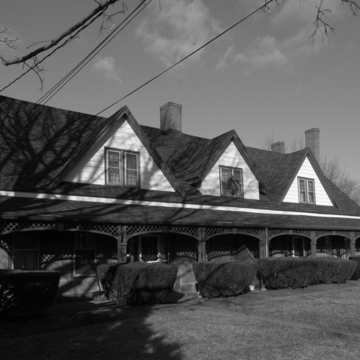You are here
Stone Cottage (Willard Felt Blacksmith Shop)
This quaint Stone Cottage, a long, low house with a central chimney, triple-gable roof, and bracketed overhanging porch once served as the smithery and wheelwright shop that produced the cars for the first commercial railway in the United States. In 1826 architect Solomon Willard, owner of the Bunker Hill Quarry (see QU15) commissioned Gridley J. F. Bryant to devise an incline railway for moving heavy granite blocks from West Quincy's Blue Hills to a wharf three miles away on the Neponset River. Willard Felt built the cars here that traveled on the iron-covered wooden rails laid across granite sleepers. Felt's shop was converted into a residence shortly after 1832, when he sold it and disappeared from railroad history.
Writing Credits
If SAH Archipedia has been useful to you, please consider supporting it.
SAH Archipedia tells the story of the United States through its buildings, landscapes, and cities. This freely available resource empowers the public with authoritative knowledge that deepens their understanding and appreciation of the built environment. But the Society of Architectural Historians, which created SAH Archipedia with University of Virginia Press, needs your support to maintain the high-caliber research, writing, photography, cartography, editing, design, and programming that make SAH Archipedia a trusted online resource available to all who value the history of place, heritage tourism, and learning.


